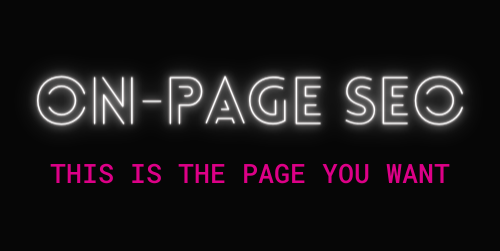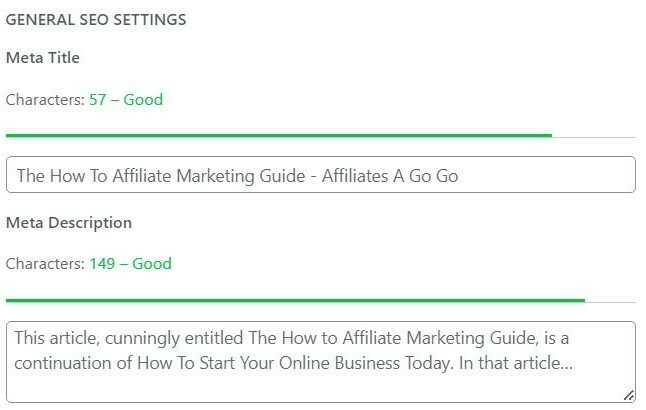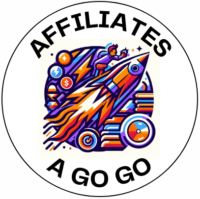
Let me start by asking you a question, “What is on-page SEO about?”
Well, in the busy world of digital marketing, on-page SEO (search engine optimization) is your gateway to visibility and user engagement. It’s the suite of strategies and practices you apply directly within your website to make it more attractive to search engines and users alike. But why is it important? Well, it’s one of the main pillars that can lift your content above the noise, signalling to the search engines that your page is worth noticing and you control it.
On-page SEO is an important part of a bigger SEO team that includes off-page SEO and technical SEO. Before we get into the nitty-gritty of on-page SEO, we should quickly clarify the distinction between these strands of SEO.
On-page SEO is the work you do on your content and layout directly on your web pages. Meanwhile, off-page SEO is the reputation your website builds through external sources, like backlinks and social media buzz. Technical SEO is the behind-the-scenes coding and site structure which, between them, ensure search engines can crawl and index your site effectively.
Now let’s focus on on-page SEO and how you can perfect your on-page game, which is crucial for winning over both search engines and your audience. It’s about charming the socks off Google’s algorithms.
Now if you’re wondering, ‘How exactly do I charm the socks off Google’s algorithms?’ then read on. We are going to find out about mastering elements such as title tags, meta descriptions, and heading structures. Add to that the finesse of keyword optimization and the craft of weaving high-quality content. Each of these ingredients delivers a particular aspect of the whole blend that is on-page SEO. So, let’s move on to the meat of the matter and break down the elements of on-page SEO.
Deciphering On-Page SEO: Key Elements Unveiled
Ready? Here we go…
Title tags can make or break your webpage’s first impression. They are the headline of your story, so they need to pack a punch. Getting it right means being concise, using your target keywords smartly, and making sure that your message is crystal clear. Search engines such as Google use title tags as a primary piece of information when determining what your page is about.

Meta descriptions are an important part of on-page SEO. They play a pivotal role in SERP (search engine results page) click-through rates and are short HTML attributes which provide concise explanations of the contents of web pages. Typically, about 150-160 characters long, they are used by search engines to display a snippet of the page content on the SERPs. While not a direct ranking factor, well-crafted meta descriptions can influence click-through rates by offering searchers a quick insight into what the page is about and how it relates to their query. This makes them a crucial element of your SEO strategy, as compelling descriptions will likely make your site’s pages more relevant and attractive to users and those search engines. They entice users to click on a link, thereby influencing the site’s visibility and effectiveness in attracting organic traffic.
Proper use of H1, H2, H3 tags, etc, will make your content more digestible for readers. It will also help search engines understand and rank the hierarchy and relevance of information on your page. You could say that in organising your content with headings, you are providing a roadmap for readers and search bots.
The art of keyword optimization is blending relevance with reader value. Back in the olden days, this was all about keyword stuffing. Today, whilst keywords are still of supreme importance, it’s all about seamlessly integrating them with your content’s flow and the queries your audience might use to find you.
Finally, quality content means giving your audience what they want. Yes, you answer their question by using the correct keyword, but you do so in a way that renders valuable, original content. You must serve your readers engaging and insightful material that not only addresses their questions but captivates their interest, thus keeping them on your page longer. And the longer they stay, the better.
Cultivating Exceptional User Experience (UX) Through On-Page Strategies
Next, let’s take a look at the crucial role of user experience (UX) in on-page SEO. This is the art of ensuring that your website functions effectively across various devices and platforms. The smoother the user experience, the more likely visitors are going to stick around, engage, and convert.
First up is mobile friendliness. You may recall that more than 50% of web traffic nowadays is conveyed via smartphones and tablets. Therefore, your site needs to adapt seamlessly to these screens. Forget responsive design as a nice-to-have; it’s essential. Waiting for your website to load is a great big turn-off. Users will not hang around and you will lose traffic, and your SEO rankings will likely dip.
Then, page load speed. Google has explicitly mentioned this as a ranking signal. Users are impatient – if your page doesn’t load within a couple of seconds on a laptop, a phone, a tablet or whatever, chances are they’ll bounce. You must optimise images, shrink code, and leverage browser caching to speed things up. Remember, a fast-loading page boosts user satisfaction and helps secure a higher spot on SERPs.

And finally, navigation and internal linking. Don’t assume your users are mind readers. You need to guide them through your website and make navigation as easy as possible for them. Furthermore, each click should take them somewhere relevant and interesting. Thoughtful internal link not only helps users find more of your content, but it also tells search engines about other pages on your site. The result? Better indexing of your content and more opportunities to rank.
So, that’s improving UX. An underestimated, but non-negotiable aspect of on-page SEO. The next aspect of on-page SEO we’re going to find out about is learning how to accentuate your content with visuals and multimedia to make it even more engaging. Well-optimised images and videos can be game changers for keeping your audience interested and coming back for more.
Enriching Content with Visual Splendour and Interactive Media
Let’s think about the magnetic effect visuals have on your audience. I hope I’m not stating the obvious, or being patronising, but surely you must see that images, videos, and infographics can make content more engaging. And more than that, they serve a purpose in catering to search engine preferences when optimized correctly.
In my opinion, nothing captivates quite like an expressive, contextually appropriate image or a dynamic video. These elements draw the eye, break up blocks of text, and convey complex information in a more digestible format.
A word of warning here: It’s key that while you’re integrating multimedia, you don’t forget about the crawlers that need to understand what these visuals represent.
This is where the power of alt tags is revealed. Alt tags are essentially annotations for images that explain to search engines what the image portrays. Accurate and keyword-rich alt tags (or text) serve two crucial purposes. They make your content more accessible to those using screen readers and they give search engines relevant data to index.
As with keywords, don’t spam with images though. Make sure your visuals resonate with your message, that they add value, and that they appeal to your audience. You can always adjust your approach down the road, based on feedback and analytics data. Just be engaged with the idea that the strategic use of visuals will go a long way towards enhancing the aesthetics of your content; not only that, but they will also add zing to your SEO juice.

There’s an awful lot of opportunity in leveraging multimedia to keep your visitors engaged. Think on, engaging videos will significantly increase the amount of time visitors spend on your page, signalling to search engines that there’s valuable content to be discovered.
Synthesising on-Page SEO Wisdom: A Brief Recapitulation
We’ve navigated the multifaceted world of on-page SEO together, exploring elements from title tags to mobile responsiveness to enriching content with visuals. In a world when control sometimes seems to be remote, understanding these components is foundational. With on-page SEO, you are in control of quite a chunk of your website’s SEO. If you want to elevate your website to the top of the SERPs, it is in your gift to go a long way towards that aim.
On-page SEO is about creating a user experience which resonates with your audience and with those search engines. It’s a continuous balancing act between technical precision and creative expression. Don’t worry too much about getting everything perfect on the first try. You can always adjust your approach to on-page SEO later on, refining and enhancing it as you learn more about your visitors’ preferences and behaviours.
Of course, perhaps the biggest part of your offering will always be your content. As a result, blending your on-page strategies with consistent, high-quality content is a must. There’s a lot of opportunity in effectively using on-page SEO to not only improve your site’s visibility but also to help forge a deeper connection with your audience. That’s the strategy I like to employ, and I hope that you can see the potential it unlocks for your own site.

Now, as we wrap up this guide, I want to encourage you to not just read the information but to absorb it and apply it. I’ll reiterate that your first attempt probably won’t be your last; SEO is an iterative process, not a do-once-and-forget exercise.

What a comprehensive breakdown of on-page SEO! Simon really nailed it in explaining the crucial elements that make a website stand out to both users and search engines. One question that popped up as I read through this insightful post: How do you prioritize which aspects of on-page SEO to focus on first when optimizing a website? Looking forward to diving deeper into this topic!
Hi Hanna, and thanks for your comment. I would say that when prioritizing the aspects of on-page SEO, you need to assess the factors that have the most significant impact on a website’s visibility and user experience.
First, and foremost, that means quality and relevant content. You can have every other aspect down to a tee, but if your content is not high-quality; is not informative; and is not relevant to your target audience you will soon get found out. Although other aspects may play a greater part in initially attracting visitors, if the product they encounter on your website is sub-par, they won’t hang around and very soon your place on the search engine results pages (SERPs) will drop.
Prioritize creating valuable content that addresses the needs and questions of your audience.
Next, come your title tags and meta descriptions. These are often the first interaction a potential visitor has with your website on a SERP. Consequently, they should be compelling, accurately describe the content of the page, and incorporate target keywords naturally.
Thirdly, consider your structure. Use header tags
(H1, H2, H3, etc.) to structure your content effectively. This not only helps with readability for users but also allows search engines to understand the hierarchy and importance of the content on your pages.
Fourth is mobile responsiveness. The use of mobile devices to access the internet is as high as it has ever been, so ensuring your site is mobile-friendly is crucial. Google uses mobile-first indexing, so a site that performs well on mobile devices is likely to rank better.
Fifth comes page speed optimization. This is again linked to people accessing the web on mobile devices. Make sure your page load time is lightning fast as it is a significant factor for both user experience and SEO. Faster websites are favoured by search engines and users alike. Focus on optimizing images, leveraging browser caching, and improving server response times.
Sixth, internal links. Helps with structure – helping search engines discover new pages and to establish information hierarchy. Site navigation is improved for users and spreads link equity across your website, boosting the SEO performance of individual pages.
Seventh, think about your URL strategy. URLs should be clean and descriptive, with target keywords included where possible. Less is more, as the more straightforward they are, the easier they are for search engines to crawl and more user-friendly for visitors.
Eighth comes image optimization. Images contribute to page load times, so optimizing them for speed and including descriptive alt tags with relevant keywords can improve both accessibility and SEO.
The penultimate factor is keyword optimization. Let’s not be coy, this is no longer the focus it once was, but ensuring that your content naturally incorporates target keywords can help improve its relevance to search queries. Do not stuff your content with keywords. Instead, focus on semantic search principles, using related terms and topics.
Finally, using schema markup can enhance your website’s appearance in SERPs with rich snippets, which can improve click-through rates.
Working on these key areas will enable you to build a solid on-page SEO foundation, improving your site’s visibility, user experience, and ultimately, its performance in search engine rankings. Always remember, SEO is a continuous process of optimization and content update to adapt to both user behaviour and search engine algorithms.
Simon